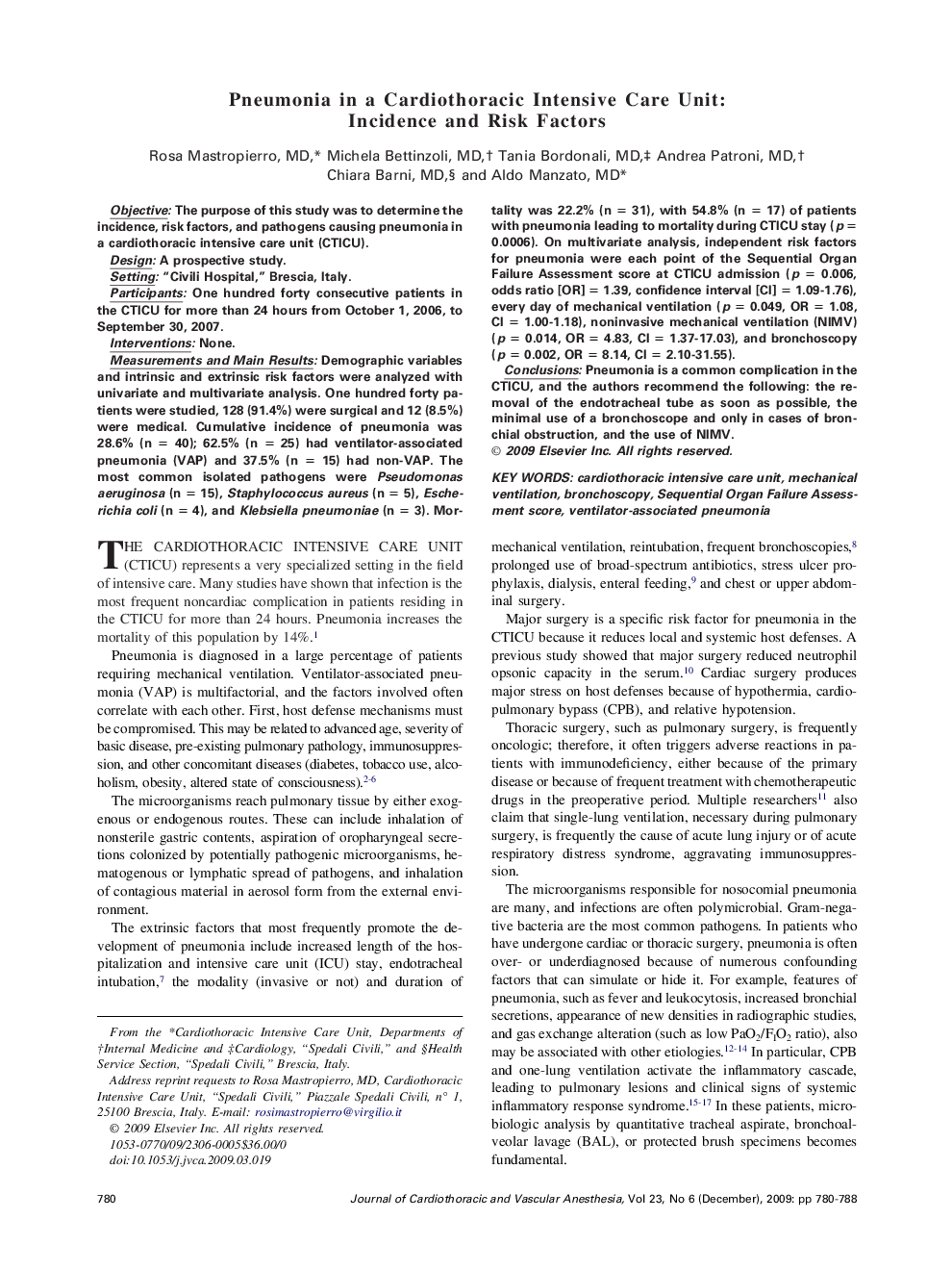| Article ID | Journal | Published Year | Pages | File Type |
|---|---|---|---|---|
| 2760139 | Journal of Cardiothoracic and Vascular Anesthesia | 2009 | 9 Pages |
ObjectiveThe purpose of this study was to determine the incidence, risk factors, and pathogens causing pneumonia in a cardiothoracic intensive care unit (CTICU).DesignA prospective study.Setting“Civili Hospital,” Brescia, Italy.ParticipantsOne hundred forty consecutive patients in the CTICU for more than 24 hours from October 1, 2006, to September 30, 2007.InterventionsNone.Measurements and Main ResultsDemographic variables and intrinsic and extrinsic risk factors were analyzed with univariate and multivariate analysis. One hundred forty patients were studied, 128 (91.4%) were surgical and 12 (8.5%) were medical. Cumulative incidence of pneumonia was 28.6% (n = 40); 62.5% (n = 25) had ventilator-associated pneumonia (VAP) and 37.5% (n = 15) had non-VAP. The most common isolated pathogens were Pseudomonas aeruginosa (n = 15), Staphylococcus aureus (n = 5), Escherichia coli (n = 4), and Klebsiella pneumoniae (n = 3). Mortality was 22.2% (n = 31), with 54.8% (n = 17) of patients with pneumonia leading to mortality during CTICU stay (p = 0.0006). On multivariate analysis, independent risk factors for pneumonia were each point of the Sequential Organ Failure Assessment score at CTICU admission (p = 0.006, odds ratio [OR] = 1.39, confidence interval [CI] = 1.09-1.76), every day of mechanical ventilation (p = 0.049, OR = 1.08, CI = 1.00-1.18), noninvasive mechanical ventilation (NIMV) (p = 0.014, OR = 4.83, CI = 1.37-17.03), and bronchoscopy (p = 0.002, OR = 8.14, CI = 2.10-31.55).ConclusionsPneumonia is a common complication in the CTICU, and the authors recommend the following: the removal of the endotracheal tube as soon as possible, the minimal use of a bronchoscope and only in cases of bronchial obstruction, and the use of NIMV.
